Being obsessed with changelogs is a bit like being into model trains. It's niche, but oh boy is it great when you can nerd out about it. How do we know? We literally have a guy on the team called "The Changelog Guy" building Shiplog.
Sure, changelogs and release notes aren't the coolest topics in tech, but they're both great marketing tools that keep your users in the loop and help to align internally and make sure your full team knows what's going on.
That's why release notes have been around for as long as software. Nowadays, though, instead of receiving large paperback product manuals in the mail every quarter, we’re treated to so many different varieties of product updates in the form of changelogs and release notes - some more creative than others.
If you’re looking for a release notes template that you can quickly customize, you’re in the right place. There’s no need to reinvent the wheel. I’ve done the legwork for you and pulled together the very best elements into a single template just for you. Just plug and play your content and ship it. Keep reading and you'll catch the download button below.
Why you should put effort into your release notes
I’ll skip the basics here. You obviously understand why release notes are necessary (communicating product changes, improving user engagement, support and troubleshooting, etc.)
But diving deeper under the hood is an often overlooked opportunity to make your app shine: product marketing. Above and beyond just sharing feature updates, keep in mind that this is a fantastic channel to elaborate and explore a multitude of untapped marketing angles as well.

Rest assured, I’ve pulled in a bunch of examples to show you exactly how others are crushing it. Let’s dive into the template.
The release notes template (plus best-in-class examples)
When I put together this template, I wanted it to be:
- Quick to fill out
- Easily customizable
- Comprehensive
Go here to download your free release notes template.
The key to making the most out of the template is in personalizing the content to your brand, product, and features. At Command AI, we’re quite opinionated and we keep things pretty light (just see our docs for an example of our cheekiness). It’s important for you to balance information with engagement when you’re filling in each section.
Header
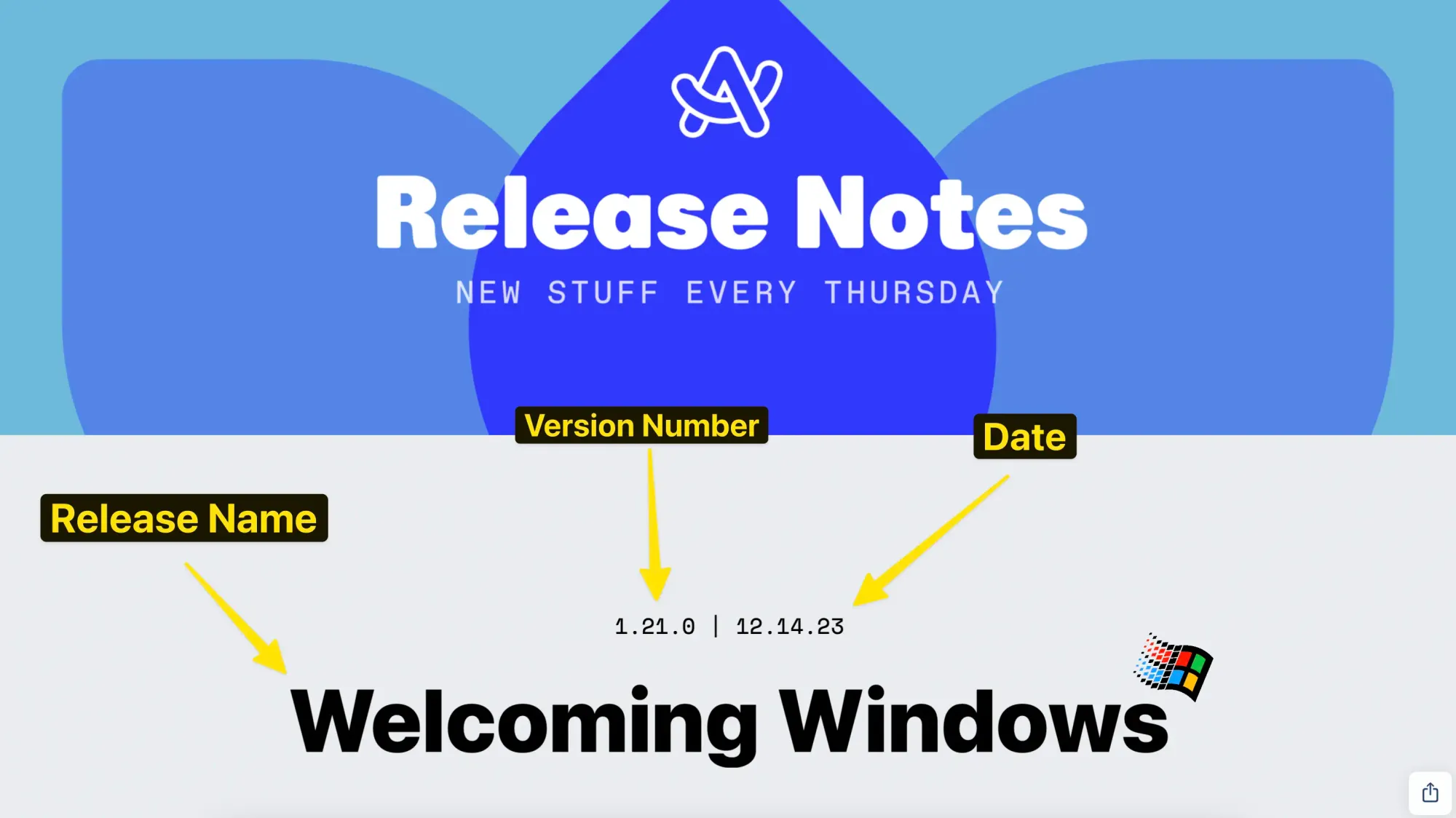
- Release name: Not always necessary depending on the format of your release notes, but if you do opt to include one, remember it's not just a label; it's the first thing that catches your reader's eye. Make sure it stands out.
- Version number: This is crucial. It helps users track the progress of your product and also cross-reference the releases to the version they’re currently using. Chat with your eng team about this, but as you know, stay consistent with your versioning system.
- Release date: Date your release note. This one shouldn’t be rocket science.
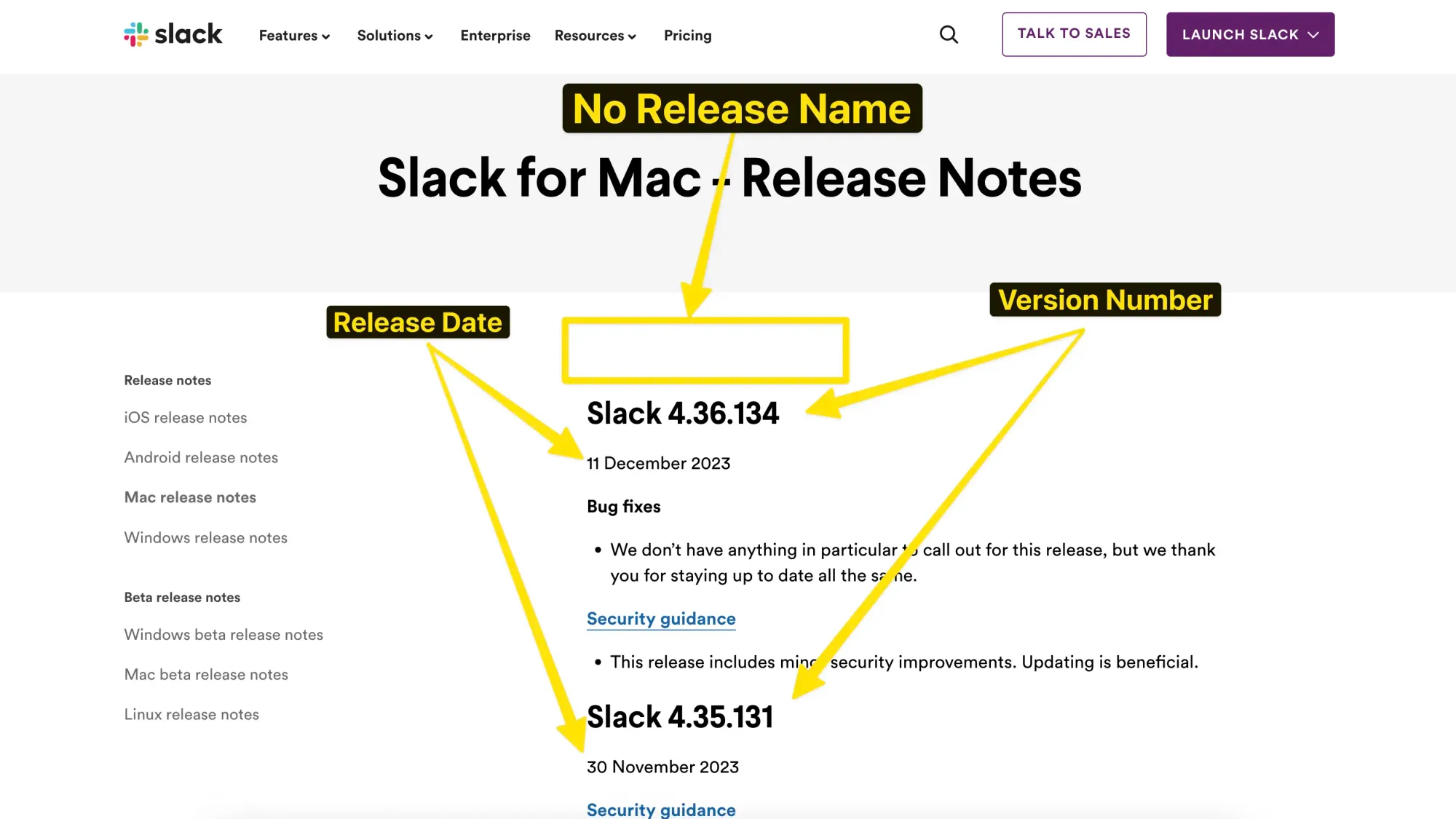
Introduction

- Brief overview: Here's where you set the stage by hooking your users in. In 2-3 sentences, summarize what this release brings to the table for them.
- Key highlights or themes: Highlight the major features or improvements. Be specific – this is the section that most users skim to see what's in it for them. Keep it short and punchy.
New features
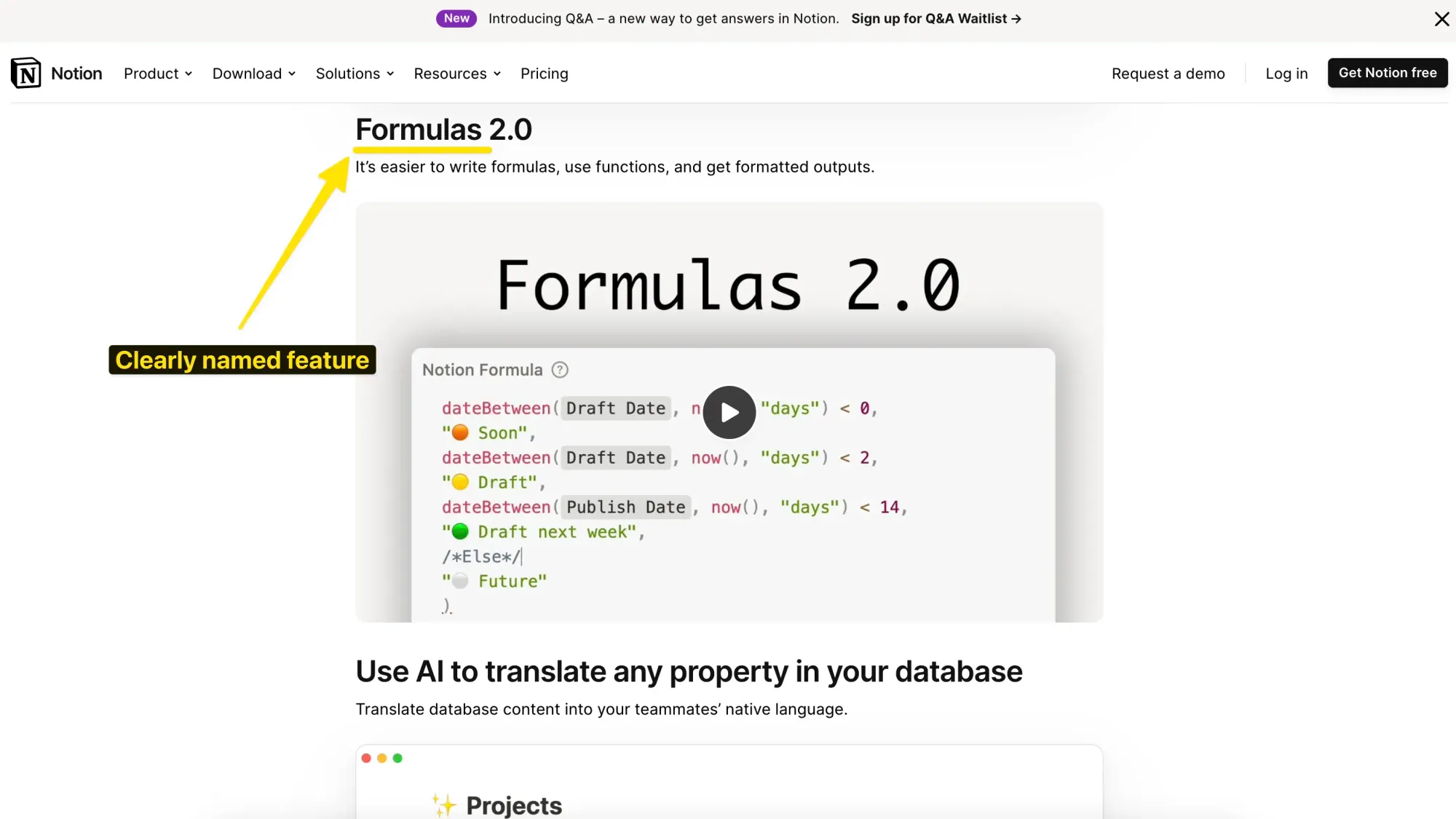
- Feature name: Clearly state the name of any new feature you launch. Remember to maintain consistent feature name parity across all surfaces of your product.
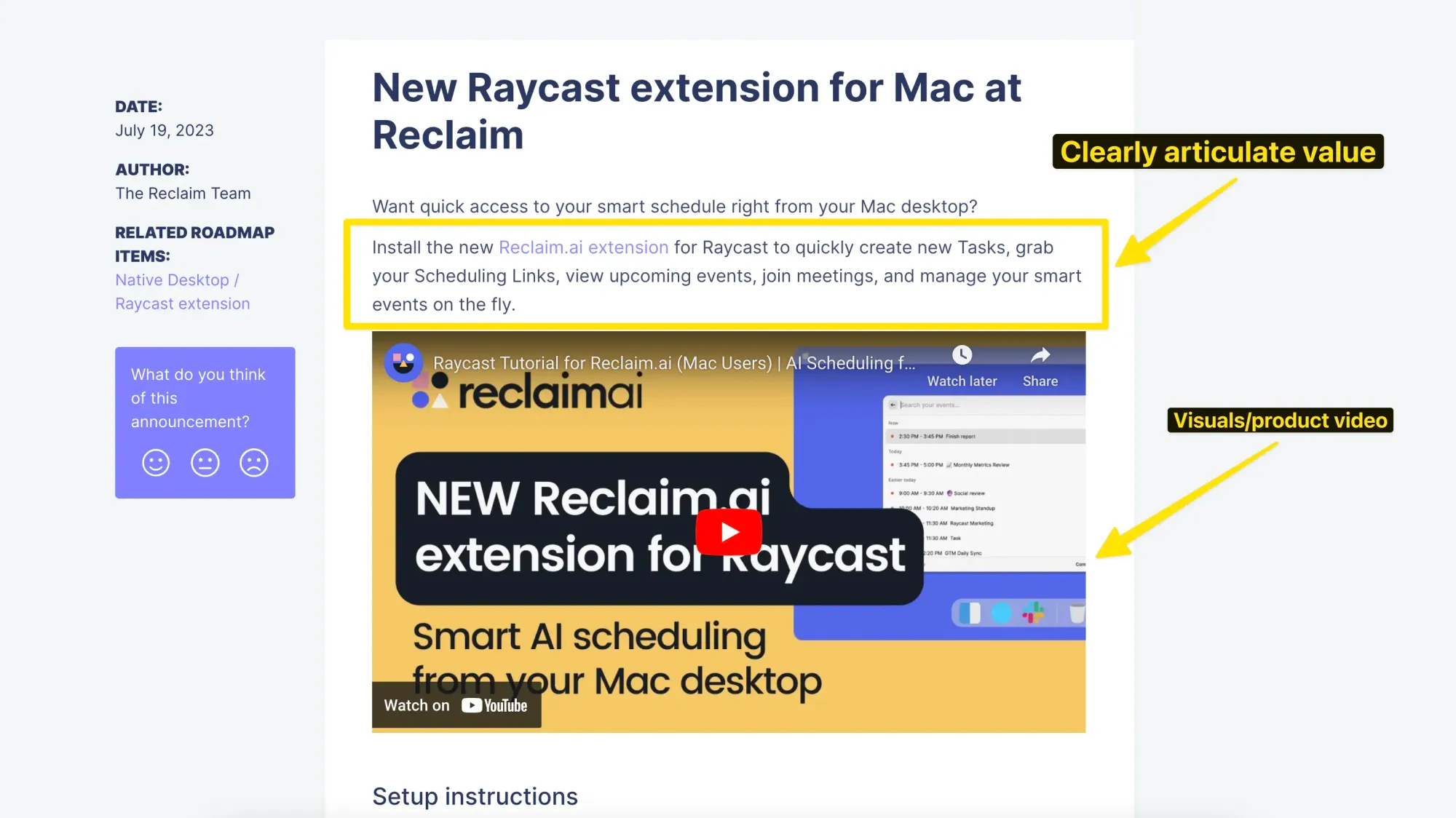
- Description: Don't just dribble on about your features. Clearly state how it enhances user experience. This is a great opportunity for you to weave in that product marketing I mentioned earlier.
- Visuals: A picture is worth a thousand words. In the example above, Reclaim uses an embedded YouTube video, but you can also roll with screenshots or GIFs to make your point clearer. Visuals can be a light-lift way to turn a mundane release note into an absolute treat for your users to consume.
Enhancements

- Description of enhancements: Here, detail the improvements you've made to existing features. A before-and-after comparison or explanation can also be helpful to give some extra context.
- User impact: Clearly articulate how these enhancements will benefit the user. Generally, this is a powerful prompt to nudge your feature adoption rate in the right direction.

Bug fixes

- List of key bug fixes: Who doesn’t love squashing bugs? Ain’t no use in trying to hide those pesky issues that have been plaguing your users. Shout ‘em out proud once you’ve toppled them.
- Explanation of fixes: Optionally, you can choose to elaborate on the fix or even include the specific issue ticket number (like 1Password does in the screenshot above).
Technical details
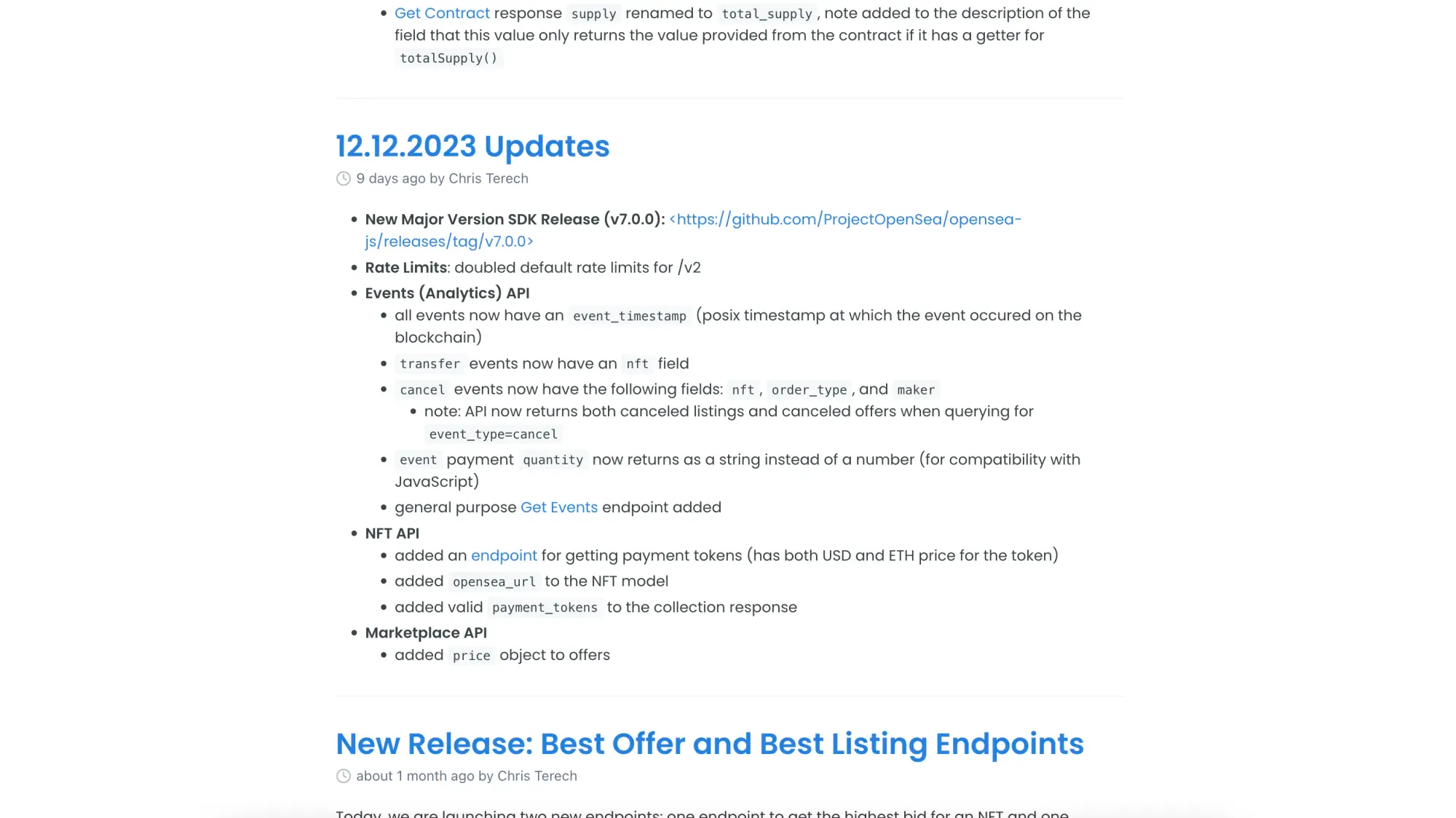
- Advanced technical information: If your product serves engineering or technical product teams, include deeper technical details. The last thing an engineer wants to be doing is digging around for information, so make their life a little easier but quickly surfacing exactly what they need to know.
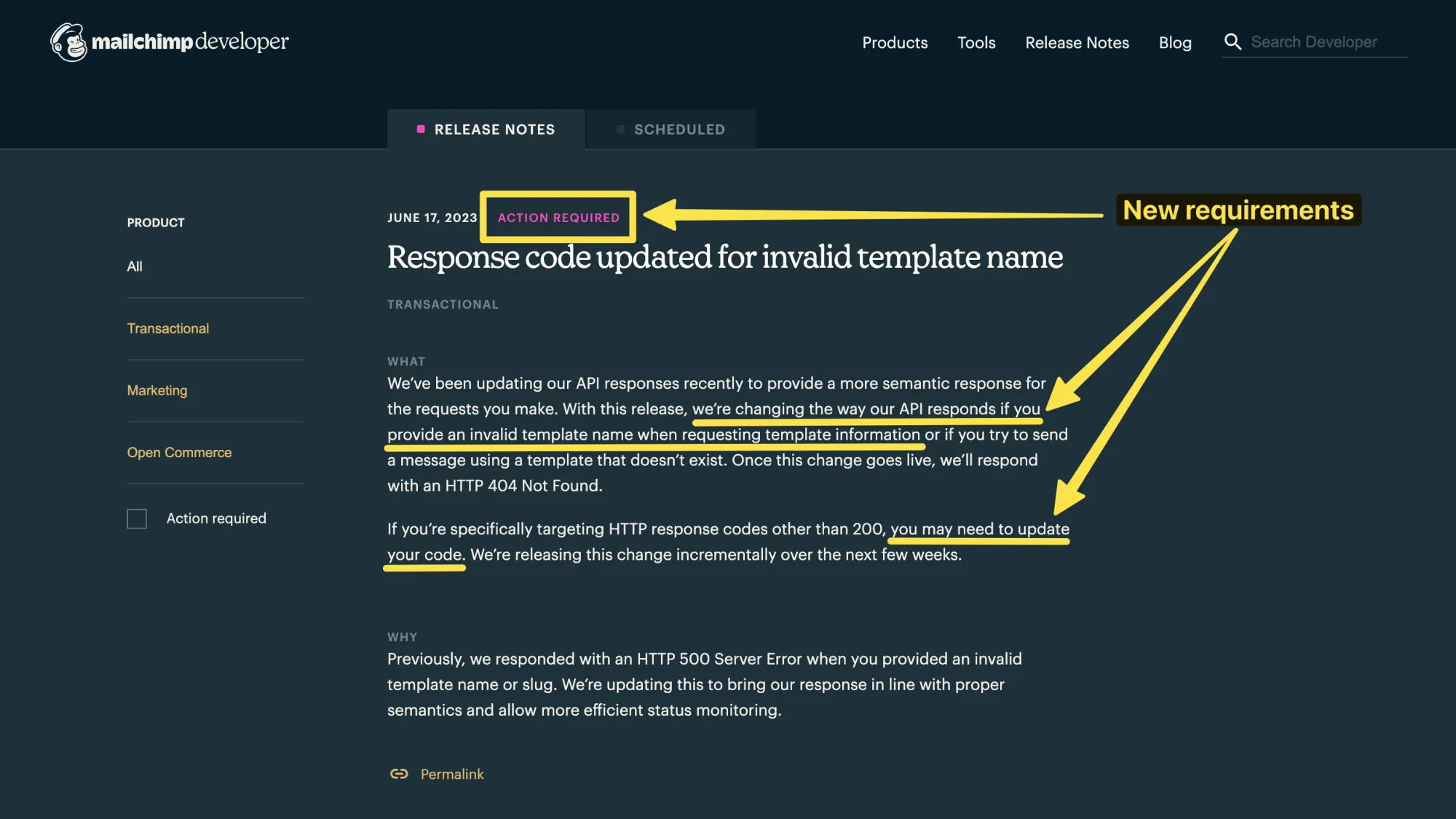
- System requirements or compatibility notes: Be explicitly clear when updates require any changes in system requirements. Your release notes should not be the only surface you communicate this to your users. You should leverage in-app nudges as well as other communication channels.
Acknowledgments
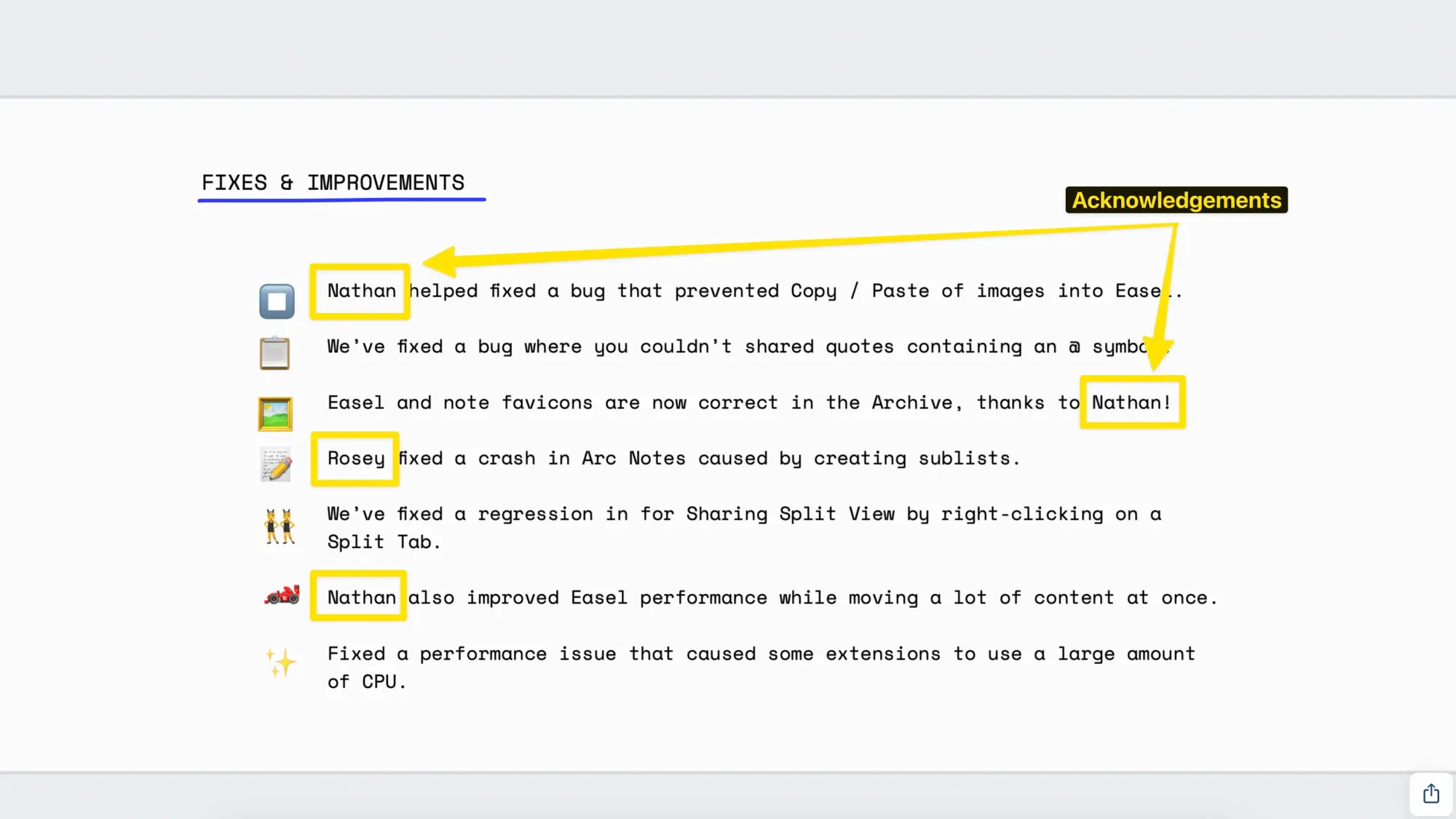
- Credits: Don’t miss out on giving credit where it’s due. The Browser company does a great job at this. Acknowledging team members fosters a sense of community and appreciation both internally and externally.
Feedback and support

- Feedback instructions: If you're looking for these insights, make it easy for users to give feedback. Direct links to surveys, forms or forums show that you value their input.
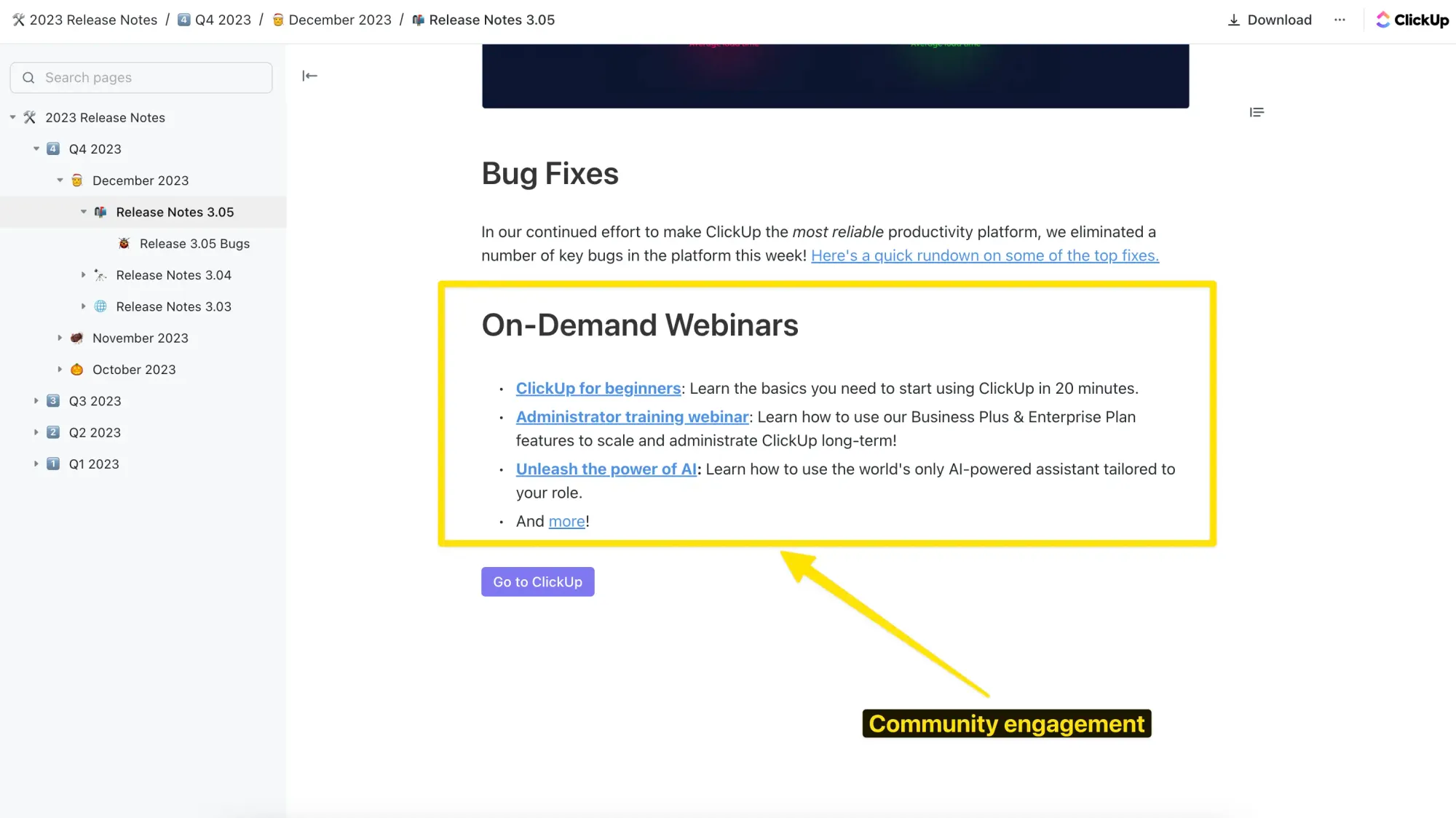
- Community engagement: Encourage users to participate in communities or on socials. This is about building a community around your product.
Future outlook
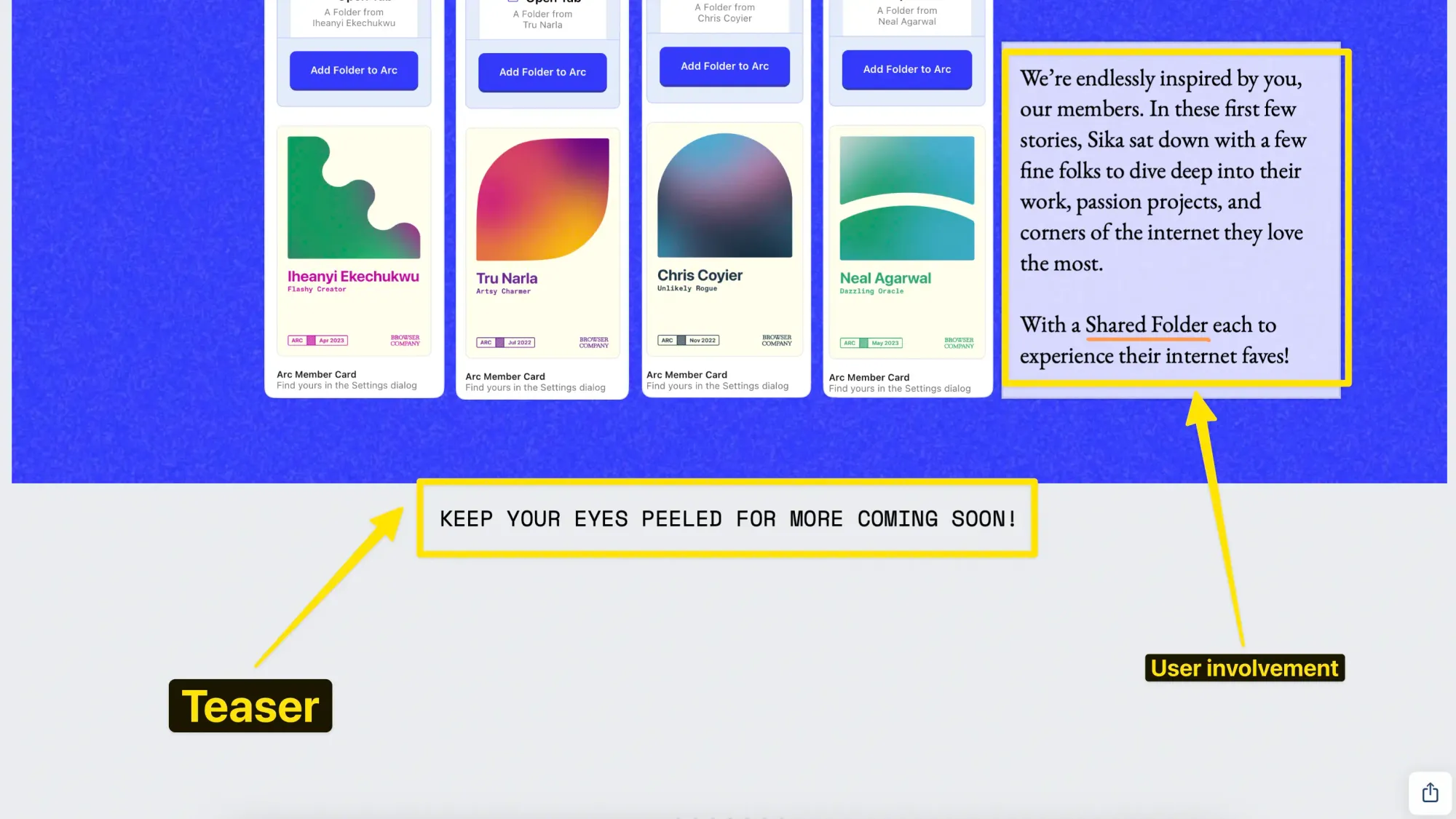
- Teaser for upcoming features: Now, I know it’s tricky sharing your roadmap publicly as you don’t necessarily want to get caught committing to projects you might wind down, but if you can, consider exciting your users with what’s coming next. It’s a great way to build anticipation and keep them engaged.
- User involvement: I mentioned this earlier too, but wherever you got the opportunity to build your community and engage with users, you should jump at it.
Download your copy of the release notes template
I’ve just walked you through the entire structure and given you plenty of examples to chew on. You can download your own copy of the release notes template here.
Whether it's a new release, a bug fix, or feature enhancements, remember to keep your release notes clear and concise, and don’t forget to add a little brand personality in there, too.

















